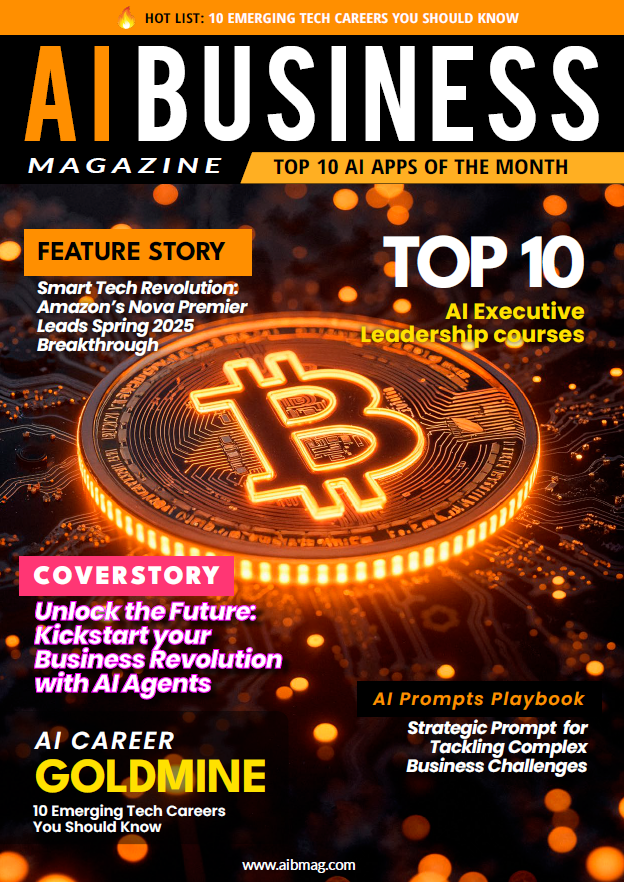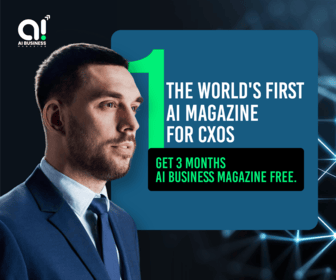Leading the Agentic AI Revolution: Your New Digital Workforce
Picture this: It’s 9 AM on a Monday morning, and Rebecca Martinez, Chief Technology Officer at a global logistics company, is sipping her coffee while watching something that would have been impossible just two years ago. Her computer screen displays a symphony of digital activity as dozens of AI agents autonomously coordinate her company’s entire supply chain. One agent negotiates shipping rates with carriers, another optimizes warehouse inventory, while a third proactively reroutes shipments around a weather disturbance that hasn’t even hit the news yet.
But here’s the remarkable part: Rebecca didn’t program these agents to handle this specific scenario. They learned to work together, make decisions, and solve problems independently. She’s not managing software anymore – she’s leading a digital workforce that thinks, adapts, and acts on its own.
Welcome to the Agentic AI Revolution, where the question isn’t “How can AI assist us?” but rather “How do we manage a workforce that never sleeps, never takes sick days, and gets smarter every day?” At AI Business Magazine, we explore stories like Rebecca’s as part of a growing shift in enterprise operations and we see a surge in demand for upskilling. As businesses deploy agentic systems, AI courses are evolving to teach not just prompt engineering or model fine-tuning, but real-world strategies for managing and collaborating with autonomous digital agents.
The Great Paradigm Shift: From Tools to Teammates
Let’s start with a fundamental truth that’s reshaping the business world: we see five big innovations for business that are driving the next wave of impact: enhanced intelligence and reasoning capabilities, agentic AI, multimodality, improved hardware innovation and computational power, and increased transparency. But among these innovations, agentic AI stands out as the most transformative.
Traditional AI was like having a very sophisticated calculator – incredibly powerful, but you had to tell it exactly what to do. Agentic AI is like having a skilled colleague who understands your business, can think through problems independently, and takes initiative to solve them without constant supervision.
This represents what experts are calling the “Cognitive Enterprise” – a model where every operational, strategic and customer-facing task is handled by a network of AI agents, seamlessly coordinated through a central platform. It’s not just automation; it’s autonomous intelligence at scale.
Consider David Chen, CFO of a mid-sized manufacturing company, who used to spend hours each week reviewing budget variances, chasing down explanations, and preparing financial reports. His new AI agent doesn’t just process the numbers – it investigates anomalies, interviews department heads via email, identifies root causes, and presents solutions before David even knows there’s a problem. It’s like having a team of senior financial analysts working 24/7, but they never get tired, never miss details, and continuously improve their performance. This kind of capability represents one of the most practical leaps in AI we’ve seen in enterprise environments where intelligent agents move beyond analysis to autonomous action, transforming how executives operate and make decisions.
The Anatomy of Agentic AI: Intelligence That Acts
So what exactly makes agentic AI different from the chatbots and automation tools we’ve been using? Think of it as the difference between a vending machine and a personal assistant.
Core Capabilities That Change Everything
Autonomous Decision-Making: Unlike traditional AI that follows predetermined rules, agentic AI can evaluate situations, weigh options, and make decisions based on goals you’ve set. It’s like having an employee who truly understands your business objectives and can think strategically about how to achieve them.
Multi-Step Problem Solving: These systems can break down complex challenges into manageable steps, execute each step, learn from the results, and adapt their approach as needed. They don’t just answer questions – they solve problems.
Continuous Learning: Every interaction makes them smarter. They learn from successes, failures, and feedback, constantly improving their performance without additional programming.
Contextual Understanding: They don’t just process information – they understand the business context, the industry dynamics, and the implications of their actions.
Proactive Initiative: Perhaps most importantly, they don’t wait for instructions. They identify opportunities, anticipate problems, and take action to drive business outcomes.

The Current Reality: Deployment Challenges and Success Stories
The transition to agentic AI isn’t without its challenges. Over 40% of agentic AI projects will be canceled by the end of 2027, due to escalating costs, unclear business value or inadequate risk controls, according to recent research. This sobering statistic reflects the complexity of implementing truly autonomous AI systems in enterprise environments.
However, the organizations that are succeeding are seeing transformative results. Accenture announced the release of its AI Refinery™ distiller agentic framework and accompanying software development kits (SDKs), offering developers an enterprise-grade platform to rapidly build, deploy, and scale advanced AI agents, indicating that major consulting firms are betting big on this technology.
The Success Stories: Early Adopters Leading the Way
Global Retail Chain: Deployed AI agents to manage their entire e-commerce customer service operation. The agents handle everything from order inquiries to returns processing, escalating only complex emotional situations to human agents. Result: 300% improvement in response times and 40% reduction in operational costs.
Financial Services Firm: Implemented agentic AI for investment research and portfolio management. The AI agents continuously monitor market conditions, analyze thousands of data sources, and make investment recommendations. They’ve consistently outperformed human-managed portfolios by 15% while reducing research costs by 60%.
Manufacturing Company: Uses AI agents to manage their entire supply chain, from supplier negotiations to logistics optimization. The agents have reduced supply chain disruptions by 80% and improved delivery times by 25% while cutting operational costs by 35%.
Healthcare Network: Deployed AI agents to manage patient scheduling, insurance verification, and preliminary diagnosis support. The agents have reduced patient wait times by 50% and improved diagnostic accuracy by 20%.
The Enterprise AI Agent Ecosystem: Your New Digital Workforce
The agentic AI landscape is rapidly evolving, with different platforms serving different enterprise needs:
Major Platform Players
Microsoft Copilot Studio: Enterprise-grade agent builder integrated with Office 365 and Azure. Excels at creating agents that work within existing business workflows and can access company data securely.
Salesforce AgentForce: Specialized in customer relationship management and sales processes. These agents can qualify leads, schedule meetings, and even close simple sales transactions autonomously.
IBM watsonx: Focuses on complex enterprise scenarios requiring deep reasoning and analysis. Particularly strong in regulated industries where explainable AI is crucial.
Google Vertex AI: Offers powerful multi-modal agents that can process text, images, and voice simultaneously. Excellent for businesses requiring rich media processing capabilities.
Specialized Solutions
Financial Services: Platforms like Kensho and AlphaSense are creating agents specifically for investment research, risk assessment, and regulatory compliance.
Healthcare: Companies like Nuance and Olive are developing agents for medical documentation, patient care coordination, and clinical decision support.
Manufacturing: Platforms like Sight Machine and Uptake are creating agents for predictive maintenance, quality control, and supply chain optimization.
Legal: Tools like Harvey and Casetext are building agents for contract review, legal research, and document discovery.
The Implementation Framework: Building Your Agentic AI Strategy
Successfully deploying agentic AI requires a strategic approach that balances ambition with pragmatism. Here’s how leading organizations are approaching this transformation:
Phase 1: Foundation Building (Months 1-3)
Assessment and Planning: Identify processes that are well-defined but complex enough to benefit from autonomous intelligence. Look for tasks that require decision-making, pattern recognition, or multi-step problem-solving.
Infrastructure Preparation: Ensure your data architecture can support real-time agent access to relevant information. Model context protocol (MCP) is becoming the plug-and-play standard for agentic AI apps to pull in data in real time from multiple sources.
Governance Framework: In 2025, company leaders will no longer have the luxury of addressing AI governance inconsistently or in pockets of the business. As AI becomes intrinsic to operations and market offerings, companies will need systematic, transparent governance structures.
Team Preparation: Train your team to work alongside AI agents, focusing on delegation, oversight, and collaborative problem-solving skills.
Phase 2: Pilot Implementation (Months 4-6)
Single-Process Focus: Start with one well-defined business process that has clear success metrics. Customer service, basic financial analysis, or inventory management are common starting points.
Agent Development: Work with your chosen platform to create agents that can handle 70-80% of routine decisions in your pilot area. Plan for human oversight and intervention capabilities.
Integration Testing: Ensure your agents can access necessary data sources and integrate with existing business systems without disrupting operations.
Performance Monitoring: Establish real-time dashboards to monitor agent performance, decision quality, and business impact.
Phase 3: Scaling and Optimization (Months 7-12)
Multi-Agent Coordination: Begin deploying multiple agents that can work together on complex workflows. AI orchestrators could easily become the backbone of enterprise AI systems this year—connecting multiple agents, optimizing AI workflows and handling multilingual and multimedia data.
Advanced Capabilities: Implement agents with enhanced reasoning, predictive analytics, and proactive problem-solving capabilities.
Cross-Functional Deployment: Extend agent capabilities across departments, enabling organization-wide process optimization.
Continuous Improvement: Use machine learning to continuously improve agent performance based on business outcomes and feedback.
Phase 4: Autonomous Operations (Year 2+)
End-to-End Automation: Deploy agents capable of managing entire business processes from start to finish with minimal human intervention.
Strategic Decision Support: Implement agents that can provide strategic insights, market analysis, and competitive intelligence.
Adaptive Learning: Enable agents to automatically adjust their behavior based on changing business conditions and market dynamics.
Innovation Acceleration: Use agents to identify new business opportunities, optimize operations, and drive competitive advantage.
The Risk Landscape: Navigating the Challenges
While the potential of agentic AI is enormous, existing AI risk programs—including ethical and cyber risks—need to evolve for organizations to move fast without breaking their brand and the people they impact. The key risks and mitigation strategies include:
Operational Risks
Agent Errors: Unlike simple automation, agentic AI mistakes can have cascading effects. Implement robust monitoring, kill switches, and human oversight for critical decisions.
Data Security: Agents require access to sensitive business data. Ensure enterprise-grade security, encryption, and access controls are in place.
Compliance Issues: Autonomous agents making decisions in regulated industries require careful compliance monitoring and audit trails.
Integration Failures: Complex agent ecosystems can create unexpected interdependencies. Plan for graceful degradation and failover mechanisms.
Strategic Risks
Over-Reliance: Becoming too dependent on AI agents can create vulnerabilities if systems fail or need to be updated.
Competitive Disadvantage: Poorly implemented agentic AI can actually harm business performance if not properly designed and managed.
Talent Displacement: While agents augment human capabilities, they will change job requirements and may eliminate some roles entirely.
Ethical Considerations: Autonomous decision-making raises questions about accountability, fairness, and transparency that must be addressed.

The Future Horizon: What’s Coming Next
The agentic AI revolution is just beginning. Here’s what leading technologists and business strategists predict for the next 18 months:
Hyper-Personalized Agents
AI agents will become increasingly specialized for specific roles, industries, and even individual users. Your marketing agent will understand your brand voice, your finance agent will know your risk tolerance, and your operations agent will optimize for your specific business constraints.
Agent-to-Agent Collaboration
The most exciting development is agents that can work together without human coordination. Imagine your sales agent automatically coordinating with your fulfillment agent to promise delivery dates, while your finance agent negotiates payment terms with your customer’s purchasing agent.
Predictive and Prescriptive Intelligence
Future agents won’t just react to problems – they’ll predict them weeks or months in advance and automatically implement solutions. They’ll continuously optimize business processes, identify new opportunities, and adapt to changing market conditions.
Emotional Intelligence Integration
Next-generation agents will understand and respond to human emotions, making them more effective at customer service, team collaboration, and change management.
The Cultural Transformation: Leading in the Age of Autonomous Intelligence
Perhaps the most profound change isn’t technological – it’s cultural. Successfully implementing agentic AI requires a fundamental shift in how we think about work, leadership, and organizational design.
From Micromanagement to Mission Command
Traditional management focused on directing activities. Agentic AI requires leaders who can set clear objectives, establish boundaries, and trust autonomous systems to find the best path forward. It’s similar to military “mission command” – providing intent and constraints while allowing front-line units (in this case, AI agents) to adapt tactics to achieve objectives.
From Job Roles to Capability Orchestration
Instead of hiring people for specific tasks, organizations are beginning to think about human-AI teams that combine human creativity, emotional intelligence, and strategic thinking with AI’s speed, consistency, and analytical power.
From Reactive to Proactive Operations
With AI agents continuously monitoring and optimizing business processes, organizations can shift from firefighting to strategic planning. Problems are identified and solved before they impact operations, freeing human leaders to focus on growth and innovation.
The Competitive Imperative: Why Early Adoption Matters
The organizations that successfully implement agentic AI first will gain sustainable competitive advantages:
Speed of Decision-Making: While competitors deliberate, your agents are already acting on opportunities and solving problems.
Cost Structure: Autonomous AI can dramatically reduce operational costs while improving quality and consistency.
Scalability: AI agents can handle massive increases in volume without proportional increases in costs or complexity.
Market Responsiveness: Agents can adapt to changing market conditions faster than human-managed processes.
Innovation Acceleration: By automating routine operations, you free up human talent for strategic thinking and innovation.
The Bottom Line: Your Strategic Moment
The agentic AI revolution isn’t coming – it’s here. Early adopters are already seeing dramatic improvements in efficiency, quality, and strategic agility. The question isn’t whether agentic AI will transform your industry, but whether you’ll be leading that transformation or struggling to catch up.
As Rebecca Martinez discovered, managing a digital workforce isn’t just about technology – it’s about fundamentally rethinking how work gets done. Her AI agents don’t just follow instructions; they understand objectives, solve problems, and deliver results. They’ve freed her team to focus on innovation, strategy, and the uniquely human aspects of business leadership.
The transition won’t be easy. 46% of executives say their organizations will be scaling AI, focusing on the optimization of existing processes and systems, while 44% expect to use AI to innovate. Only 6% say their organizations will still be experimenting. The experimental phase is over. The scaling phase has begun.
Your future organization – one with autonomous intelligence, proactive problem-solving, and 24/7 optimization – is not a distant possibility. It’s an immediate opportunity for leaders bold enough to embrace the agent revolution.
The era of managing people and processes is evolving into the era of orchestrating intelligent systems. The question isn’t whether you’re ready for agentic AI – it’s whether you’re ready to lead in a world where your greatest competitive advantage might be a workforce that never sleeps, never stops learning, and never stops improving.
The revolution is here. Your agents are waiting. The only question is: Will you lead the transformation, or will you be transformed by it?



